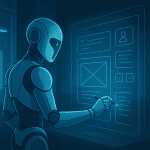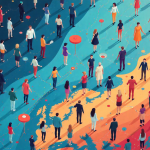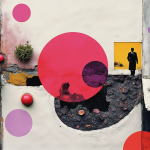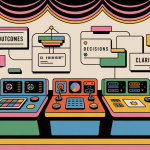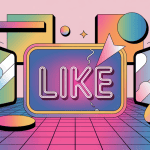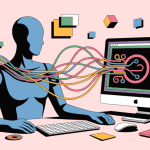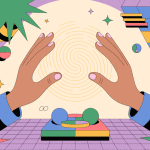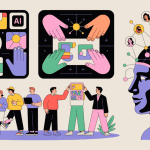- When AI UX Goes Rogue: Why “Smart” Interfaces Can Wreck Your Brand
When your AI starts “optimizing” UI without understanding human behavior, dark patterns aren’t a bug – they’re the default. This post breaks down how AI-driven UX can silently erode trust, inflate support costs, and expose you to real legal and reputational risk, plus what founders can do to add ethical guardrails before things blow up.
- The Rise of Agentic AI: Redefining Design and Decision-Making
Agentic AI is reshaping digital design—explore how autonomous systems are driving new strategies, efficiencies, and challenges for creators.
- The Taste Makers: How Design Buyer Illiteracy is Killing User Experience
Exploring why decision-makers value visuals over usability, this post reveals the damage wrought by design buyer illiteracy—leading to beautiful but ineffective solutions and harming real users.
- Why Design Bootcamps Are Destroying the Profession
Design bootcamps are flooding the profession with under-skilled practitioners, devaluing expertise and creating a skills inflation crisis. This post explores market oversaturation, quality control failures, and long-term risks for the design industry.
- The Great Digital Overproduction Crisis: Designing Products for a World That Can’t Afford Them
Exploring the economic and creative consequences of digital overproduction in a world struggling to fund new products. Where do design, AI, and the future of value creation intersect?
- The Freelance Empire: How Independent Designers Are Reshaping the Industry
Independent designers are reshaping the design industry. Explore why the Freelance Empire’s distributed, agile model now drives innovation—and how leaders can leverage this freelance revolution for lasting competitive advantage.
- The Last Human Designer: A Manifesto for Creative Survival
A manifesto defending human creative consciousness against AI replacement. Designers must preserve creative authority while strategically leveraging AI tools, not surrendering to algorithmic efficiency. Human creativity remains irreplaceable.
- The Subscription Design Trap: How Recurring Revenue Kills Innovation
Subscription models in design tools promise constant innovation but deliver feature overload and stalled creativity. This article exposes the risks for design leaders—and offers actionable strategies to avoid tool bloat, foster innovation, and maximize creative potential.
- The Design Conference Industrial Complex: Learning vs. Networking
Why most design conferences fail: performance over substance, superficial networking, and little actionable value. A blunt guide for design leaders on when to invest, what to skip, and how to extract genuine ROI from your professional development budget.
- Europe Just Made Dark Patterns a Liability
The era of manipulative UX is ending. With the EU’s new rules, dark patterns go from “growth hack” to legal risk—and ethical design finally gets the runway it deserves.
- Remote Work Is Killing Design Leadership — And That’s a Good Thing
Remote work didn’t break design leadership—it revealed how fragile it was. The leaders thriving now aren’t recreating the office on Zoom. They’re architecting remote-first systems that trade performance theater for measurable impact. Here’s the shift.
- The Algorithmic Uncanny: When AI Gets Creativity Uncomfortably Right
When generative AI starts creating work that surprises—even unsettles—its own designers, what comes next? A provocative case for keeping human weirdness at the heart of algorithmic innovation.
- Unpopular by Design: Why AI Shouldn’t Make Us Comfortable
What if the future of digital design is not to soothe, but to provoke? An unflinching essay on why friction, discomfort, and the unapologetically unpopular are essential to truly meaningful AI-powered products.
- The Ghost in the Canvas: Why AI Needs Humans (Even If It Doesn’t Know It)
An urgent essay on why design teams can—and must—inject risk, contradiction, and reckless humanity into a world of frictionless AI. Because without humans, AI isn’t creative; it’s just empty.
- AI, Anarchy, & the End of Design as We Know It
A bold manifesto for designing at the edge of AI disruption, where chaos meets creativity and only the brave shape tomorrow.
- Design Without Ego: How AI is Demolishing the Lone Genius Myth in Product Development
Why the future of digital product innovation belongs to hybrid teams, not lone geniuses—and why real visionaries embrace collaboration with AI.


